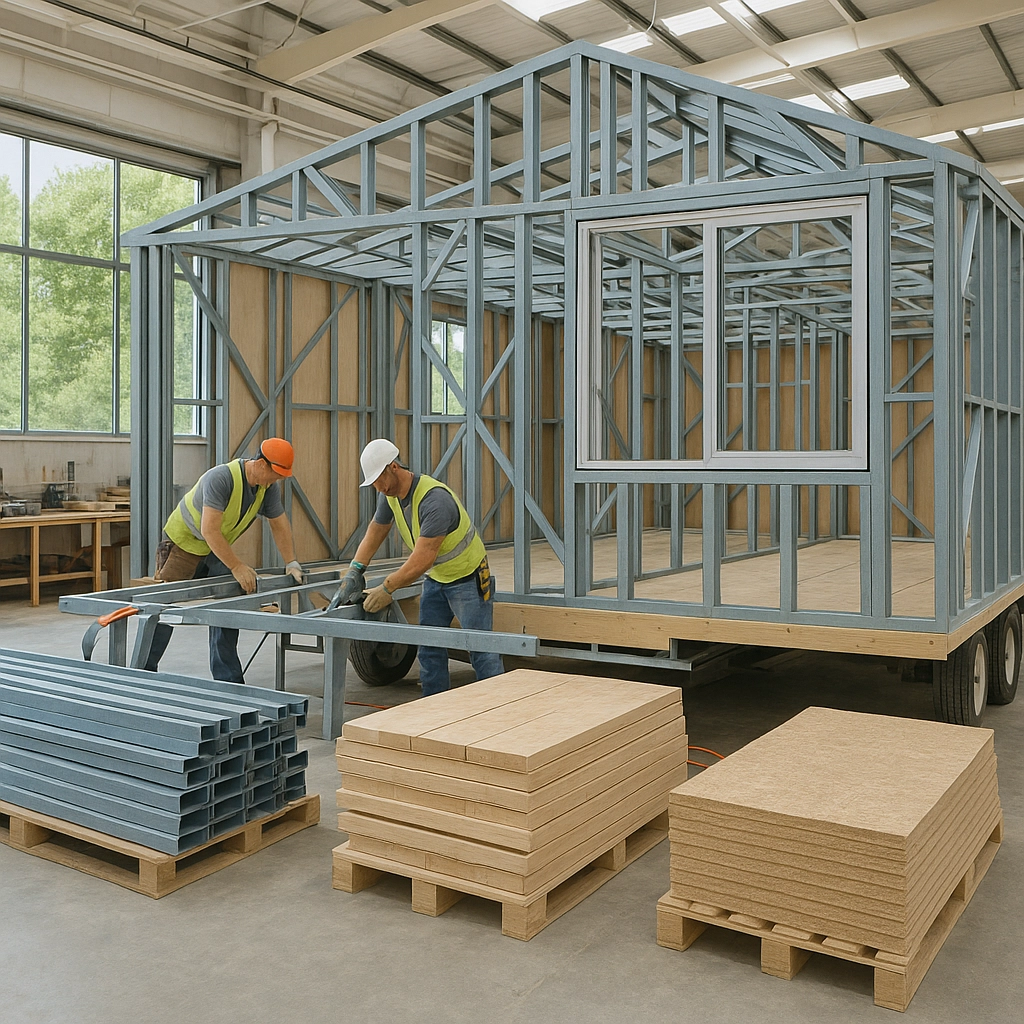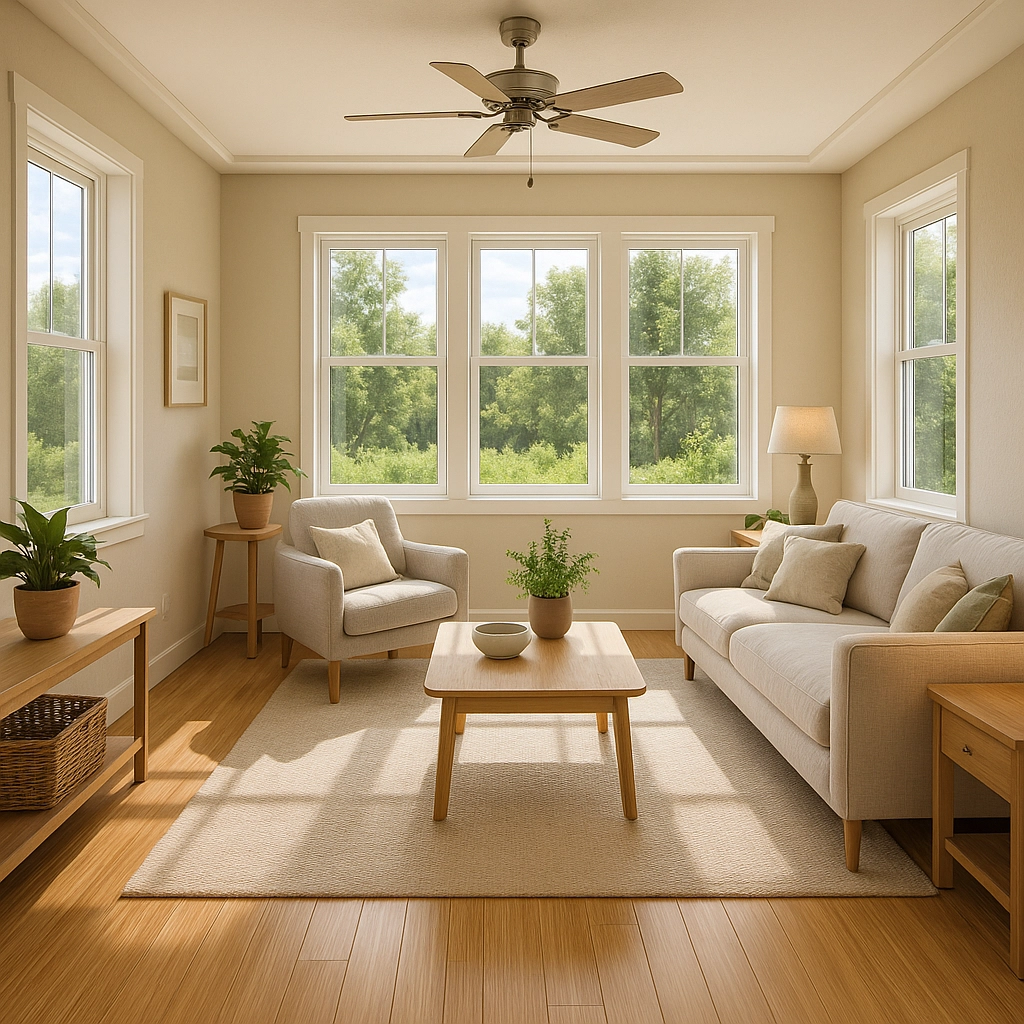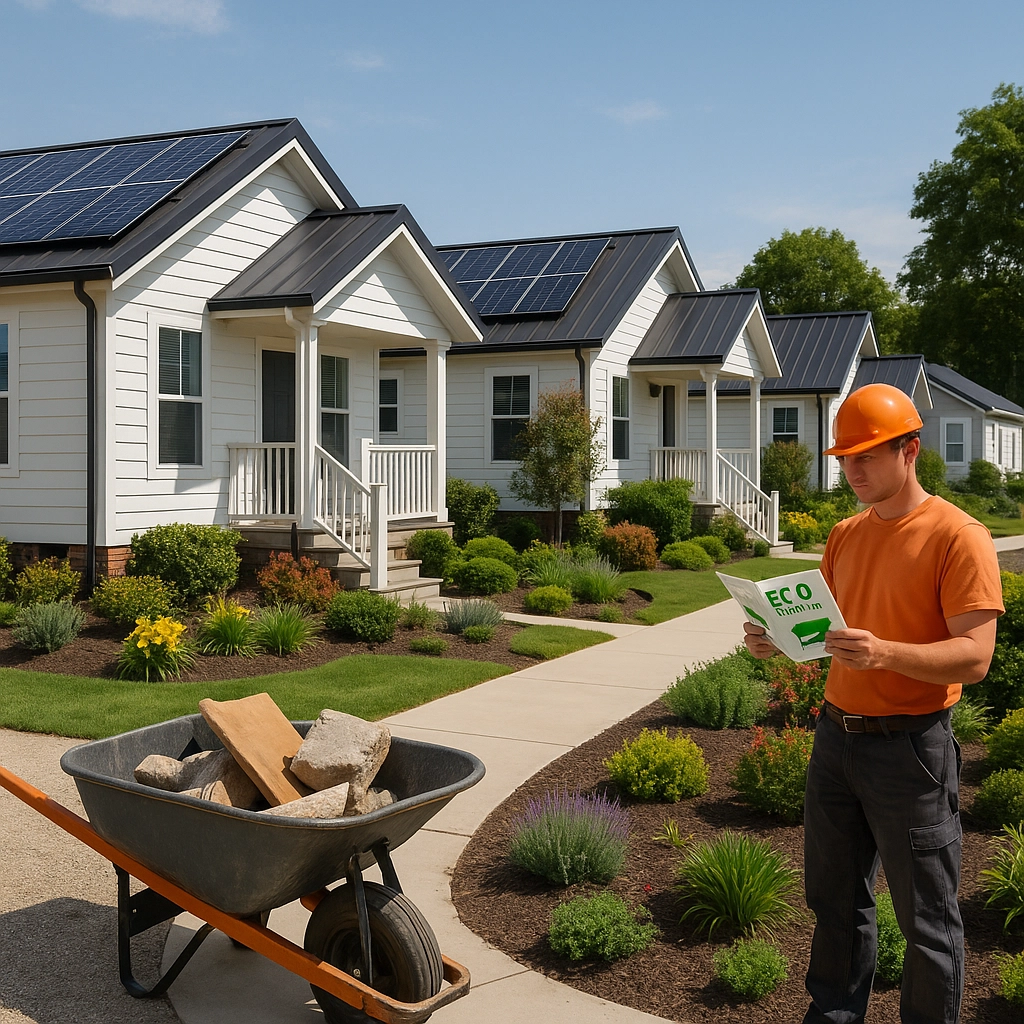Introduction: Why Sustainable Materials Matter for Manufactured Homes
Sustainable construction isn’t just a trendy buzzword anymore—it’s now a core value for homebuyers, builders, and investors across the industry. As the drive for greener, healthier, and more energy-efficient housing continues, manufactured homes are uniquely positioned to lead the way. Factory-built homes already benefit from more controlled construction and less waste, making them especially well suited to leverage the latest sustainable materials and eco-friendly design strategies.
This article digs into the concrete ways sustainable materials are making a difference in manufactured home construction. Whether you’re a homeowner, builder, or investor interested in incorporating greener choices, here’s what you need to know about the benefits, options, certifications, market impact, and practical steps toward building sustainably.
Benefits of Sustainable Construction for Manufactured Homes
Environmental Advantages
Choosing sustainable materials in manufactured homes reduces not only the environmental footprint of building the home, but also its ongoing impact year after year. Here’s how:
- Lower embodied carbon: Engineered timber, recycled steel, and low-carbon concrete substitutes dramatically lower the carbon cost of materials compared to traditional lumber or concrete.
- Resource conservation: The factory environment allows for tight control over how much material is used, which means less waste—up to 50% less than typical site-built construction.
- Use of recycled content: Incorporating products like reclaimed wood, recycled steel, or insulation made from recycled fibers keeps materials out of landfills and reduces demand for virgin resources.

Economic and Operational Benefits
Sustainable doesn’t have to mean more expensive. In fact, most eco-friendly upgrades pay off over the lifespan of a home:
- Lower utility bills: Better insulation, air sealing, efficient HVAC, and high-performance windows cut heating- and cooling-related costs for homeowners—sometimes by as much as 40%.
- Durability and lifecycle savings: Greener materials are selected for longevity and resistance to wear, lowering maintenance costs and minimizing future replacements.
- Value preservation: Homes with green features often sell for a premium and may spend less time on the market.
Health and Comfort Benefits
- Improved indoor air quality: Products like low-VOC paints, formaldehyde-free cabinetry, and clean insulation lead to safer, healthier air inside the home.
- Thermal comfort: Enhanced building envelopes result in fewer drafts and better temperature regulation year-round.
- Faster delivery of healthy spaces: Manufactured homes with eco-friendly products can often be completed and move-in ready more quickly.
Common Sustainable Materials for Manufactured Homes
The move to greener construction isn’t just a switch in philosophy—it means using a new generation of materials and systems designed for durability, health, and efficiency.
Structural Materials
- Engineered Timber (CLT, Glulam, LVL): Modern wood products like cross-laminated timber (CLT) and laminated veneer lumber (LVL) offer high strength with a lower carbon footprint than steel or concrete.
- Recycled and Low-Carbon Steel: Using recycled steel for framing delivers exceptional durability and makes use of one of the most-recycled materials available.
- Composites: Lightweight fiber-reinforced or mixed-material frames offer moisture resistance and lower maintenance, especially in humid climates.
Insulation, Finishes, and Interiors
- Low-VOC paints and finishes: Reduce indoor air pollution for healthier living spaces.
- Formaldehyde-free cabinetry: Plywood and pressed wood products that are free of formaldehyde resins help minimize harmful emissions.
- Sustainable flooring: FSC-certified wood, cork, or bamboo; recycled-content vinyl and composite flooring options bring renewable or recycled choices underfoot.
Eco-Friendly Assemblies for Manufactured Homes
- Structural Insulated Panels (SIPs): These combine structure and insulation in one, providing significant improvements in energy efficiency.
- Modular pods and panels: Factory-assembled bathroom/kitchen pods and high-performance wall or floor panels streamline onsite installation and reduce uncertainty in quality.
- Sustainable roofing: Metal roofs with solar-ready designs or high solar reflectance coatings last longer and can save on energy.
- Water-efficient fixtures: EPA WaterSense certified faucets and toilets are standard in top green manufactured homes.

Certified Green Home Materials and Standards
Key Certifications to Look For
- ENERGY STAR®: Found on appliances, windows, HVAC, or whole-home certification. Ensures lower energy usage and ongoing utility savings.
- LEED: Covers the entire home system—energy, water, materials, and air quality. A LEED-certified manufactured home is recognized for comprehensive sustainability.
- GREENGUARD: Certifies materials with low chemical emissions for improved indoor air.
- FSC: Forest Stewardship Council certification guarantees wood products are sustainably harvested.
- BREEAM/Passive House: Increasingly relevant in modular and manufactured housing outside the U.S., focusing on ultra-high performance and health.
Choosing Certified Materials
- Upfront vs. long-term costs: Certified materials may have higher purchase prices, but long-term operating savings and market value premiums usually make up the difference.
- Availability and supply chain: Factory builders work with consistent suppliers—choosing certified products supports scalability and quality control.
- Compliance/incentives: Many programs offer rebates, tax credits, or preferred green financing for certified features.
Best Practices for Documentation
- Ask for certificates and environmental product declarations from suppliers.
- Check product batch numbers and authenticity through certifying organizations.
- Keep a log of installed products for easy resale and insurance compliance.
Recycled Materials and Circular Approaches
Types of Recycled Materials Used
- Recycled metal: Great for everything from frames to siding and fasteners.
- Reclaimed wood: Adds character to interiors while lowering timber demand.
- Recycled insulation: Cellulose from recycled paper or even blue jeans offers excellent thermal performance.
- Recycled plastics: Used in flooring, decking, and some panels for durable, low-maintenance finishes.
Circular Construction and Offsite Benefits
- Standardized modules: Manufactured homes are assembled with repeatable parts, making it easier to recycle or upcycle when components reach end of life.
- Factory control: Centralized assembly lines allow for efficient material usage, less waste, and easier integration of circular practices—think reusable bathroom pods or demountable wall panels.
- Design for disassembly: Bolted connections make it easier to reclaim modules for refurbishment or reuse.
Performance and Cost Considerations
- Cost-effective in scale: Big manufacturers can drive down costs of recycled-content materials, so look for widely-available options.
- Meets code: Recycled materials must comply with HUD or local building codes—quality is not sacrificed for eco-credibility.

Market Impacts: Valuation and Buyer Preferences
Sustainability’s Effect on Value
Homes with certified sustainable features are enjoying meaningful market benefits:
- Price premiums: Studies show a 2–10% sales premium for certified green homes.
- Faster sales: Features like energy efficiency, better air, and documented sustainability shorten listing-to-sale times.
- Lower cost of ownership: Energy and maintenance savings drive up long-term return on investment.
Consumer Trends
- Millennials and Gen Z: These groups care about health, efficiency, and the environment—helping drive higher demand for green manufactured homes.
- Transparency required: Buyers now expect proof of certifications and performance—energy bills, IAQ results, and third-party credentials.
- Regional incentives: Some areas offer greater rebates and financing opportunities, especially where energy costs are high.
Builder, Lender, and Investor Opportunities
- Builders: Differentiate by standardizing green material packages and advertising certifications clearly.
- Lenders/insurers: Often offer better rates for homes with lower operating risk and higher quality.
- Investors: Stable rent and resale value from sustainable manufactured homes make for solid long-term portfolios.
Practical Guidance for Homeowners and Builders
Choosing Sustainable Materials
- Performance: Make sure materials will meet code and perform well in your climate.
- Certification: Look for third-party proof—FSC, ENERGY STAR, LEED, GREENGUARD.
- Cost & value: Consider both upfront and lifecycle costs, including maintenance and energy savings.
- Supply & scalability: Use suppliers with a proven track record and stable supplies.
- End-of-life: Aim for materials that are recyclable or reusable.
High-Impact Upgrades
Focus first on: insulation, windows, HVAC, and air sealing. These offer the biggest bang for your green buck.
Working with Suppliers and Contractors
Ask questions:
- Can you supply recent certificates and environmental product declarations?
- What’s the recycled or bio-based content in this product?
- What’s the warranty and expected lifespan?
- How is quality controlled in the factory?
Sample Checklist:
- ENERGY STAR/GREENGUARD/FSC certificates
- Environmental product declarations (EPDs)
- Warranty paperwork
- Maintenance schedule
- Delivery/installation instructions
Financing and Incentives
- Green mortgages: Ask lenders about energy-efficient or green home loan options—they may have better rates or terms.
- Rebates and tax credits: Use resources like DSIRE (https://www.dsireusa.org/) to check federal and local incentives for energy upgrades or certified materials.
- Keep up with maintenance: Proper care extends the payback and health benefits of your sustainable investments.
Conclusion: Takeaways & Action Steps
- Sustainable materials in manufactured homes improve environmental performance, lower costs, and offer healthier living environments.
- Look for certified products—ENERGY STAR, LEED, GREENGUARD, FSC—to assure quality and unlock value.
- Recycled and circular materials are more available and effective than ever—factory-built homes make innovation easy.
- Value for buyers and investors is on the rise, especially as demand for green homes grows.
Next steps:
- Audit your current or planned manufactured home for easy eco upgrades (start with insulation or low-VOC finishes).
- Ask your supplier for certifications and EPDs.
- Explore financing and incentives available in your area.
For more info, check out:
- ENERGY STAR: https://www.energystar.gov/
- U.S. Green Building Council (LEED): https://www.usgbc.org/
- DSIRE (U.S. incentives): https://www.dsireusa.org/
- Forest Stewardship Council (FSC): https://fsc.org/
Ready to make your next manufactured home greener, healthier, and more valuable? The answers are out there—and Post Oak is here to help.
